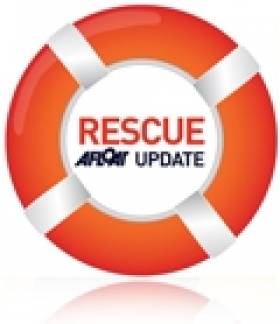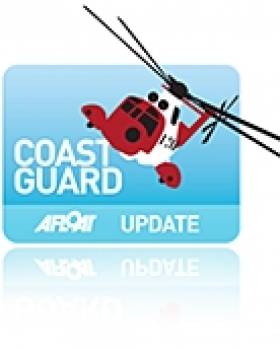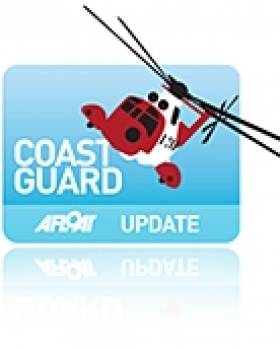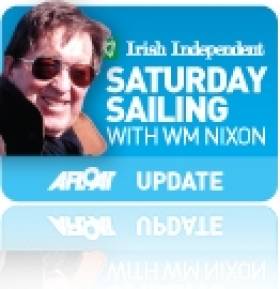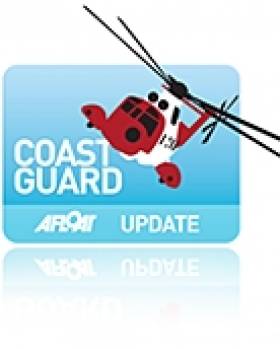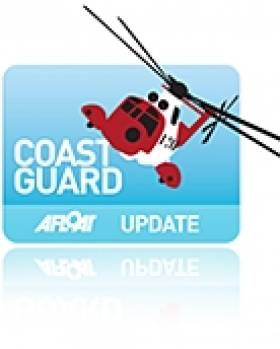Displaying items by tag: Coastguard
Belfast Coastguard Short-Staffing Raises Concerns
#Coastguard - Belfast Coastguard was staffed "at below risk assessed levels" on eight separate occasions last month, as the Belfast Telegraph reports.
The upsetting news was revealed by Britain's Transport Minister Stephen Hammon in response to a parliamentary question on the status of Northern Ireland's only full-time maritime search and rescue control centre - which also has responsibility for much of the east coast of Scotland after the closure of Clyde Coastguard near Glasgow just over a year ago.
The Maritime and Coastguard Agency (MCA) confirmed that Belfast received support from other coastguard centres - such as Stornoway - when its staff levels dipped below requirements.
Meanwhile, coastguard staff have until 10 January 2014 to either re-apply for their jobs or take redundancy under the British Government's streamlining of the national coastguard network.
The Belfast Telegraph has more on the story HERE.
Driver Rescued On Achill Island As Car Goes Into Deep Water
#Rescue - The Irish Times reports on a "lucky escape" in Co Mayo yesterday (22 December) after a car plunged into deep water on Achill Island.
The driver of the vehicle was quickly rescued by the island's Irish Coast Guard unit after her car came of the road near Keel Lake in gale-force weather conditions, and was left teetering on an underwater ledge above a 25-metre drop.
Sadly a similar incident in Co Roscommon just hours before had a tragic end when the driver of a car that went into a lake could not be revived, though his passenger managed to escape the vehicle.
The Irish Times has much more on these stories HERE.
Christmas Carol Could Save Your Life, Says Coastguard
#coastguard – Her Majesty's Coastguard is giving you the gift of safety this Christmas. Coastguards have produced their very own Christmas carol video, with 12 top safety tips
Last year, Coastguards dealt with 430 search and rescue incidents over the Christmas and New Year period ( 21 December 2012 – 2 January 2013).
Call outs ranged from dogs over cliffs, people stuck in mud, walkers cut off by the tide and broken down boats to Coastguard Rescue Officers supporting Christmas Day swims.
Richard Martin, Chief Coastguard, says:
"Her Majesty's Coastguard responds to calls every day of the year, sending out rescue teams in all weathers and often at unsocial hours. Christmas is no different.
"But this festive season we created our very own version of '12 Days of Christmas' to make sure people remember some of our key safety messages.
"These include checking the weather and tide times before setting out. The last thing you want to do on that Christmas Day morning stroll is to become cut off by the tide and miss out on lunch.
"If you're taking the dogs out for a walk on Boxing Day, make sure they're on a lead, and try not to go too close to cliff edges as they could be slippery or crumbly.
"We'd like to take this opportunity to wish everyone a fun and safe Christmas. But remember, if you do get into difficulty at the coast, call 999 and ask for the Coastguard."
End Of An Era As Irish Coast Guard's Last S61 Retires
#Coastguard - It was the end of an era yesterday (10 December) as the last remaining Sikorsky S61 search and rescue (SAR) helicopter in the Irish Coast Guard fleet stood its final SAR watch since services began in 1991 and was retired from active service.
According to the IRCG, the last stand by 'Alpha Romeo' was possibly the last ever watch by the world's oldest SAR S61, going on an impressive 52 years since its manufacture.
From today the chopper will be replaced by one of the new Sikorsky S92 aircraft, which as previously reported on Afloat.ie are currently being trialled as an air ambulance service, set to expand from Galway to Dublin in the coming weeks.
Irish Coast Guard Helicopters Trialled As Air Ambulances
#Coastguard - The Irish Coast Guard's rescue helicopter fleet is being utilised on a trial basis as an air ambulance service, as RTÉ's Morning Ireland reports.
The new fleet of Sikorsky S92 choppers will do double duty as a Helicopter Emergency Medical Service (HEMS) network in addition to their usual search and rescue requirements, following a trial period in Shannon that's set to be extended to Dublin shortly.
Some 300 HEMS operations have already been carried out this year, and Morning Ireland's Petula Martyn reports from one of the coastguard's latest, an airlift from Galway University Hospital to Beaumont Hospital in Dublin's Northside.
The IRCG has also sought permission from sports clubs nationwide to enable to the state-of-the-art S92 to land on their pitches - considerably cutting the transfer time for patients from helicopter to hospital.
Listen to Martyn's report for Morning Ireland below:
Light Aircraft Ditches in Lough Erne
#coastguard – At 4.30pm tonight the Belfast Maritime Rescue Coordination Centre was advised by Shannon Air Traffic Control that a light aircraft with two people on board was about to ditch in the Loch Erne area due to low oil pressure.
Belfast Coastguard immediately requested helicopter assistance. The Irish Coastguard Rescue helicopter from Shannon and the Police helicopter proceeded to the scene along with the RNLI lifeboat from Carrybridge. The Erne Coastguard Rescue Team was also tasked to the shore side. Belfast Coastguard contacted all other emergency services, Fire, Police and Ambulance.
Incredibly the pilot was able to land the craft on the Loch very close to shore. The pilot and passenger were then able to swim the small distance ashore. The two casualties were checked over by waiting paramedics and then taken back to their accommodation by the Erne Coastguard Rescue Team.
Jude McNeice, Belfast Coastguard Watch Manager said,
The actions of this highly skilled pilot undoubtedly saved the lives of himself and his passenger. This potentially serious incident could've ended very differently; they are two very lucky men
What Has Happened to Sailors' Traditional Self–Reliance At Sea?
#safetyonthewater –Can it really be true that lifeboat call-outs in Ireland in 2013 – most of them for recreational boating of some sort - showed a staggering increase of 43% over 2012? W M Nixon discusses the disturbing figures, and considers whether it is possible to re-build the traditional amateur seafaring tradition of competence and self-reliance.
Time was when the most respected sailing folk, the people with the highest standards in their boats and in their use of them for their dedicated style of seafaring, were accustomed to sail the sea on the principle that they would much rather drown than cause any inconvenience or danger to other seafarers in any way whatsoever.
This applied particularly in the matter of being rescued. Being rescued just wasn't done. It was a sign of appallingly poor seamanship. Indeed, having what other people might describe as an adventure of any kind was frowned upon. "An adventure" was looked upon by the pioneers of cruising - just as it was looked upon by their contemporaries, the top explorers - as evidence of incompetence.
It was an admirable if impossibly idealistic attitude, which had its roots in the earliest days of amateur seafaring. In that distant era, the first very few pioneers were venturing forth for pleasure on seas where working people with much less in the way of economic resources were struggling to make a usually poor and often dangerous living as fishermen. To emphasise the difference, pleasure sailors only fluttered about the place in summer like butterflies, whereas those who worked the sea in small boats had to face its ferocity all year round.
Also sharing the sea were the crews of cargo carrying vessels whose demanding owners did not welcome tales of their vessels being delayed and the valuable cargoes put at risk, even for the shortest possible periods, in order to assist or rescue some incompetent amateur. As for the regulators of the sea, the naval ships and the revenue cutters, they were naturally suspicious of people going about their inexplicable business with "pleasure" as their reported objective, sailing hither and yon in their strange little vessels.
They undoubtedly were "little" vessels, as the new sport of cruising with its codes of a high standard was developed by the emerging middle classes of the 19th Century. Unlike the aristocracy and monarchy, who would sail the sea in large yachts with crowds of attendants and everything – including rescue if needs be - done in a very public manner as part of the grand life's rich tableau, the middle classes valued privacy above everything else.
Thus the code of self-reliance in cruising evolved, propounded by folk like Richard Turrell McMullen, who developed the principle of total self-reliance to such an extent that even in coastal waters he cruised single-handed in his final years. And even when pleasure boats numbers and rescue services had developed to an impressive level in the late 20th Century, the "shame of being rescued" was still a very potent attitude which encouraged high standards in boat maintenance and seamanship.
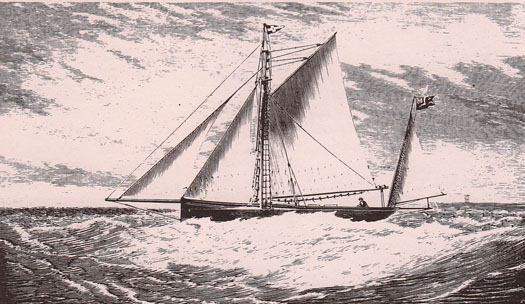
Pioneering seafarer Richard Turrell McMullen in his 42ft Orion, with which he cruised the Irish coast in 1869. McMullen expounded a doctrine of self-reliance and competence in amateur sailors, and would have regarded being assisted by the lifeboats as a matter of extreme shame.
But today, well into the second decade of the 21st Century, the RNLI call-out figures for Ireland do not make happy reading for advocates of rugged seafaring self-reliance. Could it be that the ubiquitous presence of highly-visible lifeboats in our main harbours, with their presence further publicised at major rescues, is creating excessive haste in calling them out for non-emergency reasons?
Admittedly the summer of 2013 was so good that there were many more people afloat in June, July and August than in 2012's grim conditions. Thus many of those rescued will have been casual impulse boaters, rather than dedicated seafarers. But nevertheless a year-on-year increase of 43% in lifeboat launchings, most of them for recreational boating of some sort, is very discouraging for an activity which supposedly prides itself on its capacity for sensible self-regulation, and derives satisfaction from overcoming challenging conditions without assistance.

The Dun Laoghaire lifeboat on exercise in Dalkey Sound. This was Ireland's busiest station in the summer of 2013, with 34 call-outs in June, July and August Photo: David Branigan/Dun Laoghaire RNLI
For the record, Dun Laoghaire was the busiest station with 34 call outs. Portrush in County Antrim was next on 26, just ahead of Crosshaven with 25, while Fenit, Wicklow and Skerries (where their new boat, the Atlantic 85 Louis Stimson, was named and dedicated on Saturday September 7th) were all on 17.
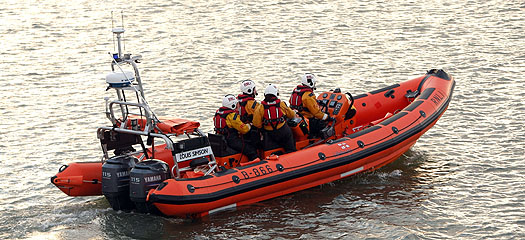
The new lifeboat at Skerries, an Atlantic 85, was dedicated and named the Louis Simson on September 7th. The Skerries station had 17 call-outs during the three summer months.
Of course there are those who will claim that, in many instances, talking of "rescues" would be over-stating the case. When a situation looks like being serious from the outset, the Coastguards – and particularly their helicopter – will get involved. In fact, so many genuinely life-saving events involve helicopters that it's surprising no-one seems to have thought of a rescue helicopter service service funded by charities. Maybe they have, but have found it would be impossibly expensive. In any case, with lifeboats, there's the obvious and stirring maritime link. "Those in peril on the sea" must be one of the most recognisable phrases known to us, and providing charity support to lifeboats is a direct and very satisfying way of connecting with it.
But the fact that the lifeboats receive so much of their funding from charity, and are manned largely by volunteers, adds to the moral overtones when any rescue is successfully carried through. And as we cannot know how even the most minor boat difficulty might go pear-shaped at some future stage, then if the lifeboat gets involved, the perception is that you've been rescued however minor the problem may have been, and notwithstanding the fact that the lifeboatmen themselves may phrase their report to spare the rescued crew's blushes.
The lifeboatmen's attitude is better safe than sorry, and much better safe even if just slightly embarrassed. But an analysis of the incidents in Irish waters is intriguing, and they provided some events with unwelcome publicity. For instance, the ISA's Gathering Cruise-in-Company from Dun Laoghaire towards Dingle in July experienced four different lifeboat call-outs.
The highest-profile incident was the rescue of the crew of 30 from the tall ship Astrid when her engine failed on the short hop from Oysterhaven to Kinsale in fairly rough conditions of onshore winds. One possible story suggests that prior to her arrival in Ireland, one of Astrid's fuel tanks had been accidentally filled with fresh water, which is something that can easily happen in a large and complex old sailing ship during a busy turnaround time in port. In line with their spirit of self-reliance, Astrid's crew had reportedly declined offers of professional assistance in making the tanks diesel-ready again. But despite their best efforts, it seems there might have still been a small quantity of fresh water left, quite enough to cause what became a catastrophic engine stoppage.
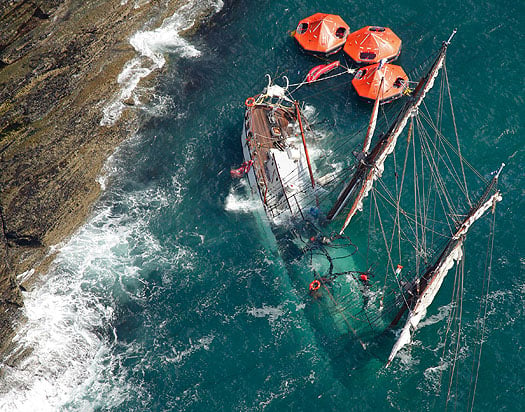
The end of a dream. The sinking of the privately-owned Dutch sail-training tall ship Astrid was a catastrophe, but it wasn't a tragedy as all 30 on board were efficiently rescued by the lifeboats. Photo: Bob Bateman
In fairness to The Gathering Cruise-in-Company, the Astrid sinking was a big ship event with which they became associated almost incidentally. But the three other call-outs were directly linked. The second most serious (after the Astrid) of the Cruise-in-Company's call outs was for the Ballycotton Lifeboat for an injured crewman on a 42ft yacht six miles southwest of the port. Injuries were such that the casualty was transferred by lifeboat to a waiting ambulance at Ballycotton, then as the injured person was a key member of the 42ft yacht's crew of three, the lifeboat returned to the cruiser and escorted her to port.
The other two lifeboat callouts for the Cruise-in-Company were to assist a yacht with her propellor fouled by a fishing pot marker off Kilmore Quay, and to tow in one of the participating boats after her engine had failed off Kinsale.
The hazard of getting fouled in fishing pot lines is even greater in Ireland than other similar places like Cornwall, where Ben Ainslie has written of his family's experience of having their fine yacht driven ashore at the entrance of the Helford River and getting badly holed on rocks, after the propellor had knotted itself in a lobster pot line. The lobsters and crabs along the Irish coast being even more prolific, it's a constant problem when under power, and there are few challenges more daunting than motoring in late afternoon straight into the sun on passage from Carnsore Point to Kilmore Quay, and knowing that the entire route is a maze of pot markers, some quite clearly defined, others lurking just below the surface in the strong tides, and all virtually invisible with the notorious brightness of the sunny southeast right in your eyes.
So for cruising in Ireland, an obvious solution is one of those cunning little cutting devices fitted to the propshaft to slice through any ropes, but even they can be defeated by too much rope. When it does happen, a serrated bread knife with the means of and quick and easy attachment it to the boathook can sometimes work wonders.
But the proliferation of cruisers with SailDrives exacerbates the problem. They may fulfil the designer's dream of having the propellor immersed as deeply as possible, and in clear water too, but it means they're perfect targets for wayward pot lines, and you need a diver or a liftout to get at them if they become fouled.
But do propellers really need to be so deeply immersed? After all, in motorboats they're close under the surface, and often reasonably accessible by long-arm methods from a dinghy. Admittedly with a sailing boat with her extra pitching through having a mast, there is a danger that a shallow-mounted propellor will come out of the water as she punches into a head sea. But for years I'd a share in the Contessa 35 with a high-mounted propellor well aft, and it never came out of the water while motoring in a head sea. Yet thanks to the boat's pintail stern - which had few other merits - you could just about reach the prop from the dinghy, whereas today's wide-sterned boats might preclude that. Whatever, in re-aligning the engine in my current boat, something which just had to be done when I discovered the builders had installed it at an angle of 21 degrees plus, when the manufacturers insist it should be no more than 15 degrees with 7 degrees is an ideal target, I now have a setup where the propellor can be reached by clambering down the stern boarding ladder.
All of which is little enough comfort for a cruising boat with a fouled propellor being rescued by the Kilmore Quay lifeboat during the Cruise-in-Company, but that in turn begs the question: Where were the other cruisers-in-company when this situation arose? The notion behind a cruise-in-company is that there's a feeling of mutual support, and minor problems can be dealt with by assistance from your fellow participants. But even in the companionability of a cruise-in-company, could it be that we've become so accustomed to hearing about the use of rescue services that even with buddy boats presumably near, an everyday get-you-home problem can still lead to an emergency call?
It seems to have happened with the lifeboat going to that engineless boat's aid off Kinsale and more recently the maritime community expressed shared embarrassment when the crew of a cruiser-racer of a notably able type called out the lifeboat when their engine failed as they sat becalmed off Wicklow Head.
But as boat numbers increase, professional privately-run services develop to meet the growing need for assistance like this. In boat-crowded places like Long Island Sound, and indeed on many parts of the coast of the USA, commercial assistance and get-you-home services have been a feature afloat for many decades. And anyone who has been around the Solent will be familiar with the SeaStart service, to which you can subscribe as a sort of insurance, and which now does commercially many of the tasks which used to take up too much of lifeboat time.
{youtube}VrqzFIfV1w4{/youtube}
Even the colours of their boats suggest that SeaStart is the same reassuring presence afloat as the AA is ashore.
Interestingly, SeaStart now sees its role as including the education of its less-experienced subscribers in order to raise their standards of boat and equipment maintenance, and improve their attitudes to sailing the sea. Yet because it's all being done by what is essentially a commercial organisation, those availing of its services don't feel themselves being morally oppressed by a do-gooder organisation or an interfering nanny state.
It works well in a densely-boat-populated area like the Solent region, but we have to face the reality that Ireland has an enormous and often rough coastline, and boat numbers are relatively very few, and often far between. So for now and the foreseeable future, most of us in day sailing, cruising and offshore racing are going to have to rely on self-regulation with a sensible attitude to seafaring, and the use of voluntary services supported by charitable donations in emergencies.
The situation is of course very different in inshore racing, where highly organised club rescue teams with their crash boats, and an admirable ethos of efficiency among their crews, set a standard of self-help and self-regulation which is a credit to our sport. But as soon as the scope of the event spreads from the purely local, and the boat-size goes beyond dinghies, we find ourselves interacting with national emergency and rescue services.
So in seeing the MOD 70 trimaran capsizing in Dublin Bay in June and observing the flurry of helicopter and lifeboat activity – all very necessary as two crew were soon in hospital, one for an extended stay with a severely fractured pelvis – we were seeing a new world. It's a situation very far removed indeed from the schooner America making her unaccompanied way across the Atlantic in 1851, with no contact with anyone until, without fuss or bother, she prepared for the historic race around the Isle of Wight which in its turn was sailed without any expectation of the use of rescue services.
And for those of us in the less exalted areas of personal choice sailing, it really is a matter of self-regulation if we are going to avoid having the authorities impose regulation upon us. In considering this disturbing 43% increase in lifeboat call-outs in 2013, it's difficult to avoid the conclusion that the only reason there aren't threatening rumbles of regulation and inspection from the government is simply because of the dire circumstances of the national finances.
Were we not in a situation of government cutbacks on every front, it's highly likely there'd already be some advisory body looking at ways of making the boating world adopt a more responsible, self-reliant and disciplined attitude towards its activities. That in turn would lead to an increased inspectorate and more supervision, with further erosion of the sense of freedom in sailing the sea. And in the end, it's boat people who would have to pay for it themselves. It's up to us to protect this activity we cherish so much, and to treat it with the respect it deserves.
#coastguard – Belfast Coastguard were contacted in the early hours of this morning by the police, following a call they had received from a concerned hotel proprietor whose two male occupants had gone out walking in the Ballycastle area and had not returned.
The two men, from America, were expected back at their holiday residence yesterday afternoon. When they had still not been seen or heard from late into the evening, the Coastguard was called by the police and asked to co-ordiante a search of the area.
Coastguard Rescue Teams from Ballycastle and Colraine were dispatched to the Ballycastle area and the Irish Coastguard Rescue helicopter was scrambled to look for the two men.
After almost 4 hours of searching, the two men were located at Fairhead, they were both airlifted by the Rescue helicopter and transferred into the care of the ambulance service to be treated for the cold temperatures which they had been subjected to and for minor cuts and bruises.
Belfast Coastguard Watch Manager Ian Murdock said
The search conditions on scene tonight were westerly force 4 to 5 winds, but fortunately for these casualties the storms affecting the rest of the UK tonight have not been so severe in this area.
These men were well equipped and had informed people of their plans which meant that when they did not return the correct authorities were alerted.
Coast Guard Advises Caution as Met Éireann Issues Gale Warning
#coastguard – The Coast Guard advises the public to be careful on exposed westerly coasts, cliffs, piers, harbour walls, beaches, and promenades this weekend especially Sunday due to forecasted strong gale force westerly winds.
Met Éireann has a gale warning in operation with southerly winds increasing to gale force later tonight and tomorrow morning with Gale or strong gale force westerly winds developing on all coasts tomorrow night and during Sunday.
Specific advice from the Coast Guard is:
Remember to monitor weather broadcasts
Avoid exposed westerly coasts, cliff paths and coastal areas during forecasted strong gale force westerly winds this weekend
Do not venture out to sea unnecessarily when gale force conditions are forecast
Owners of small vessels and fishing vessels in coastal waters to remember to always Wear a Personal Flotation Device and let someone know your whereabouts and when you are due back.
If you do see someone in difficulty in the sea, on the shore, cliffs, lakes or rivers dial 999 or 112 and ask for the Coast Guard.
Coastguard Locates Stricken Irish Sea Vessel & Tows to Safety
#coastguard – A vessel that first reported suffering steering problems off the south west of Scotland early this afternoon has now been found and towed to safety.
Liverpool Coastguard received a 999 call from one of the two people on board the vessel just after 1pm this afternoon, reporting they were having mechanical problems. They said they were was just south of Burrow Head, having set off from Oban and heading to Liverpool.
The Ramsey RNLI all-weather lifeboat was sent to the scene, but they could not track down the vessel. Liverpool Coastguard managed to get hold of those on board again and soon established they were in a different position near the Cumbrian coast. The Workington RNLI all-weather lifeboat joined the search, but again on arrival at this new position there was no sign of the vessel.
Further contact was made with the two on board the boat, who were told to set off their distress flares. These weren't spotted by those on scene. In light of the approaching darkness and misty conditions, the Whitehaven and Maryport Coastguard Rescue Teams were sent to carry out harbour and coastal searches. The search and rescue helicopter from RAF Valley was also sent to join in the search and a mayday relay broadcast was made asking for any other boats to report sightings.
The helicopter from RAF Valley finally located the vessel just before 6pm this evening off Harrington, Cumbria. The boat was then towed into Workington harbour and met by the Maryport Coastguard Rescue Team.
Lucy Hicks, Watch Manager at Liverpool Coastguard, said:
"This was a difficult rescue as we did not have the exact location of this vessel. They didn't have a VHF radio on board or an emergency beacon which could have sent a more accurate position of where they were.
"An extensive search continued for a number of hours, and with darkness fast approaching along with deteriorating weather conditions, we needed to find this boat. Luckily, they were spotted by the search and rescue helicopter and then taken to safety.
"We always recommend that boats are well equipped with all the necessary communications and navigation equipment on board. It's also useful to have an Emergency Position Indicating Radio Beacon (EPIRB) or a Personal Locator Beacon (PLB) with you, which can send an accurate position of where you are to the Coastguard."



























